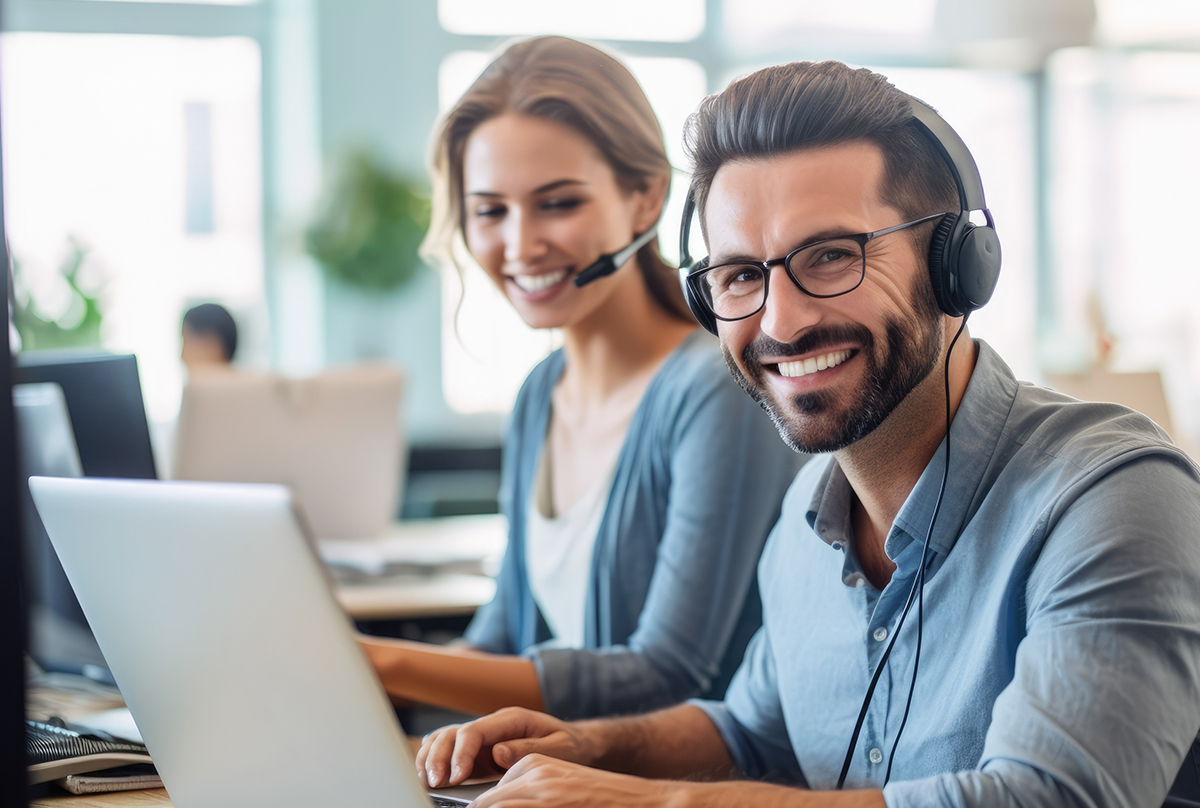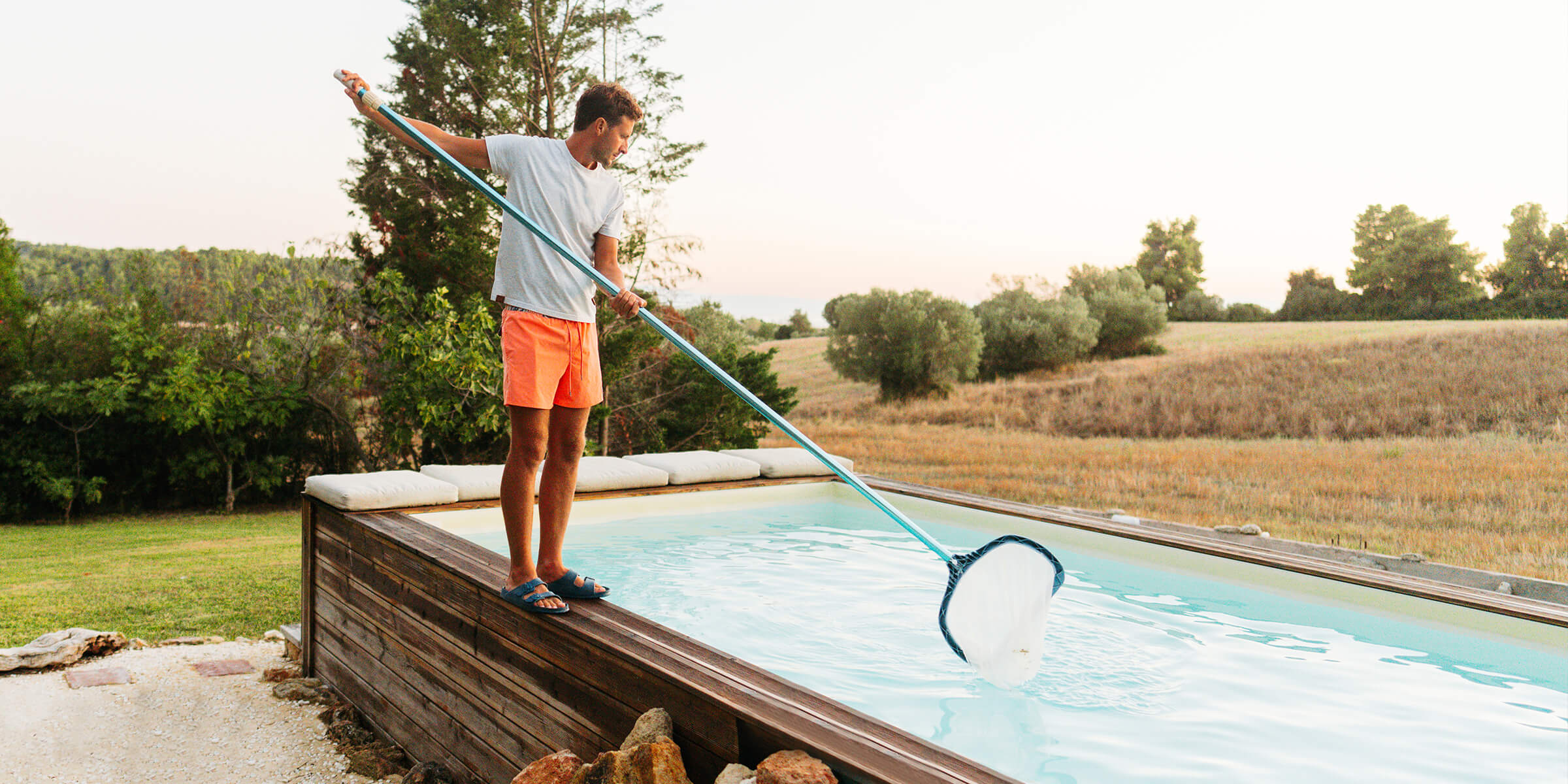So you’ve got a new pool, congratulations! Welcome to endless hours of fun with family and friends, as well as refreshing, relaxing downtime.
To enjoy your pool to the fullest, regular maintenance is key. It will protect the health of swimmers and prolong your pool’s lifespan.
Not sure where to start?
We’ve put together this pool maintenance for beginners guide to show you how pool maintenance can be straightforward and affordable with Hy-Clor products.

Getting Started With Pool Maintenance
- Balancing pool water with the right chemicals.
- A well-functioning filtration system.
- Regularly brushing and vacuuming the pool walls and floor.
And what tools and products will you need?
Testing Your Pool Water
Just as a doctor runs tests before prescribing medication, you’ll need to test your pool water to find out what chemicals it needs.
Weekly testing prevents algae, bacteria growth, and cloudy water, which can damage your pool equipment and harm the health of swimmers.
- Before adding chemicals (preferably in the morning), use a clean container to collect water from an arm’s length below the surface, away from the skimmer or returns.
- Dip a Hy-Clor 7 in 1 Instant Pool & Spa Test Strips or Hy-Clor 5 in 1 Instant Spa Test Strips and refer to the directions on the bottle.
- Match the colour on the strip to the chart provided or by using the Hy-Clor Water Test App to determine your pool’s chemical levels.
- Adjust the necessary chemicals to achieve the recommended balance.
Need help? Download the Hy-Clor Water Test App from the Google Play or Apple app stores.
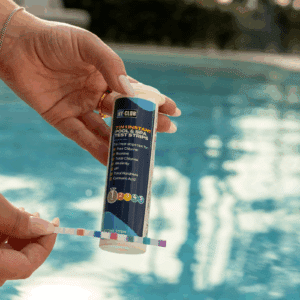
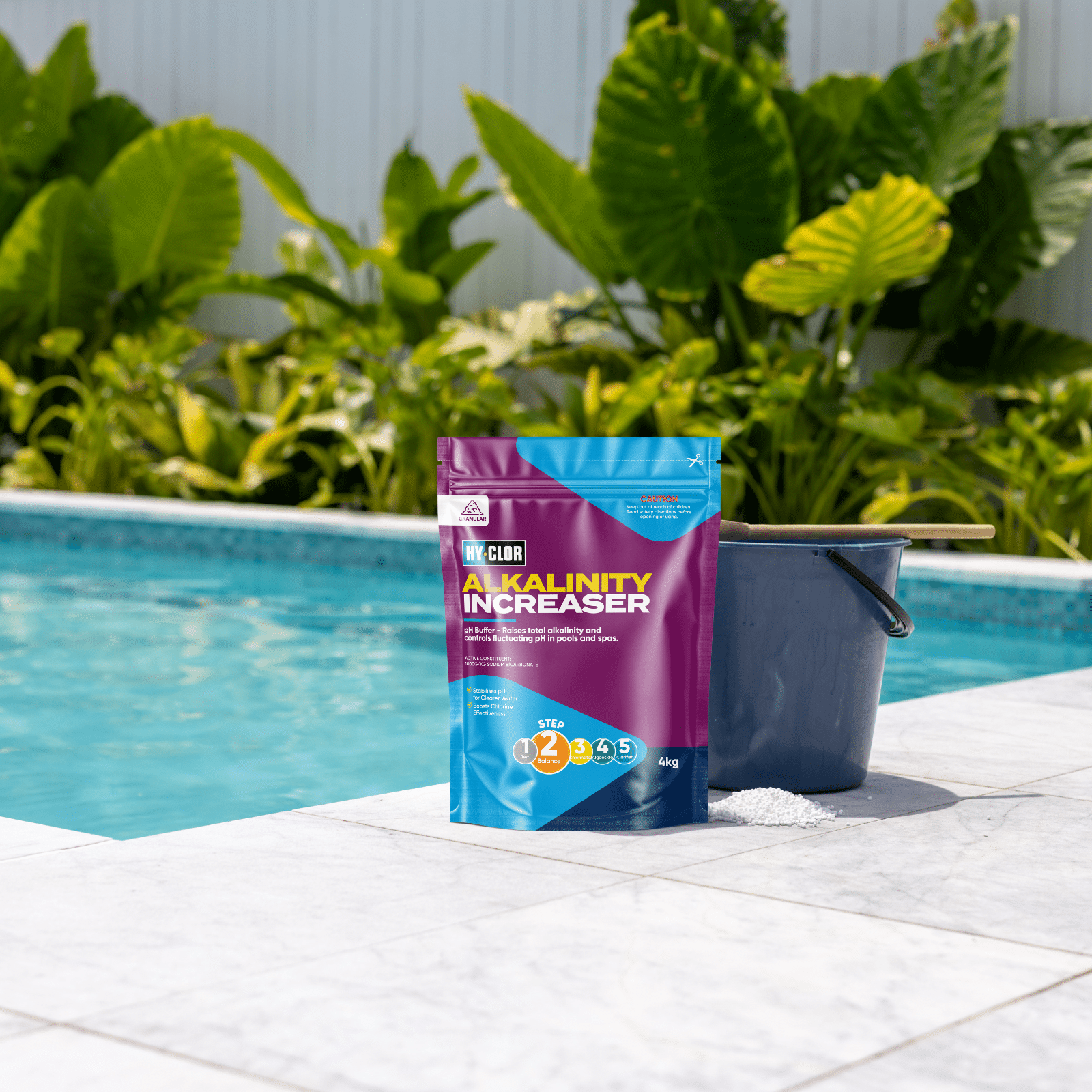
Balancing Your Pool Water
Balance is important in all aspects of life, and your pool is no different.
Balancing your pool water means maintaining the correct chemical levels for a safe and clean pool environment.
Here’s how to do it with Hy-Clor chemicals (in this order).
- Alkalinity: Total alkalinity levels should be between 80 and 120 parts per million (ppm) so pH levels don’t fluctuate. Use our Alkalinity Increaser to raise alkalinity if it’s too low.
- pH: The ideal pH level for chlorine efficiency and a comfortable swimming environment is between 7.2 and 7.6. Use our pH Increaser or pH Decreaser to adjust pH levels as necessary.
- Calcium hardness: Aim for calcium hardness levels between 200 and 400 ppm to prevent plaster damage and scaling. Use our Calcium Increaser to adjust the hardness if it’s below the recommended level.
- Stabiliser (Cyanuric Acid): A cyanuric acid level of 30 to 50 ppm protects chlorine from being rapidly broken down by the sun’s ultraviolet rays. Add our Stabiliser (Sunscreen) or Stabiliser Tablets if levels are low.
- Salt: The recommended salt level for a saltwater chlorinator to convert salt to chlorine ranges between 2,500 and 3,500 ppm. Use our Super Salt or Ultra Premium Pool Salt to increase your pool’s salt level as needed for a clean and sanitised pool.
Chlorinating Your Pool
Chlorine is probably the hardest-working chemical in swimming pool maintenance. Its job includes fighting algae, bacteria, and viruses to keep water hygienic and sparkling clean.
Your pool’s continuous chlorine level should be between 1 and 3 ppm.
At Hy-Clor, we have various chlorine options to maintain this level.
- Granular: This form of quick-dissolving chlorine can be distributed evenly throughout your pool or as a spot treatment for particular issues. You can use it for routine upkeep or intensive shock treatments.
- Liquid: Ideal for regular sanitisation. Also particularly useful for larger pools or when you need to fix chlorine levels quickly.
- Tablets: These tablets gradually release chlorine to achieve a consistent level over time. Simply place them in your pool’s floating dispenser, skimmer, or automatic feeder for hassle-free distribution.
- Shock treatment: Treat your pool weekly with shock to remove bacteria, body oils, sweat, and sunscreen. These contaminants can cause cloudy water, a strong chlorine odour, and eye irritation.
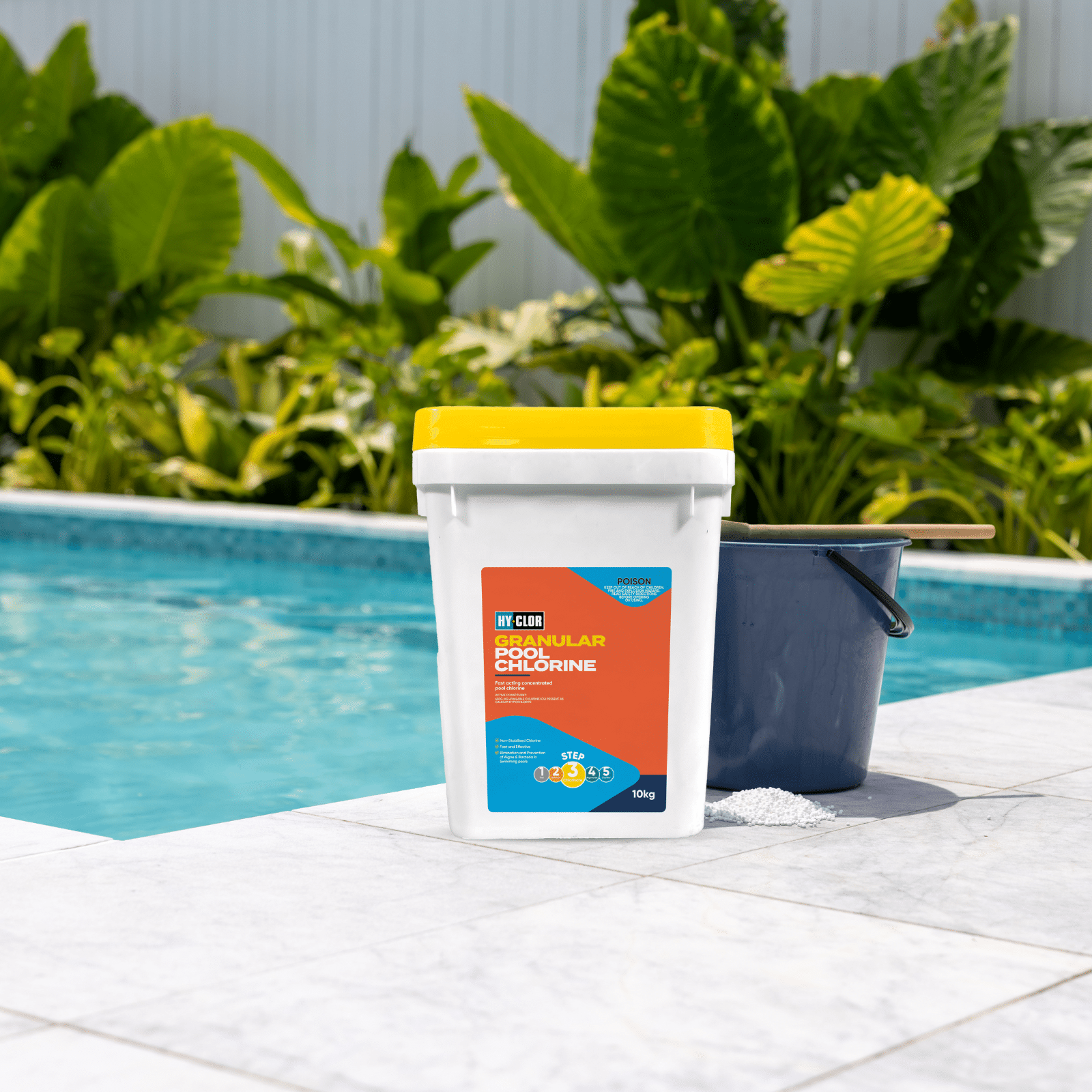

Preventing Algae Formation
Algae equals ugly, murky water that can turn green.
It’s primarily caused by
- An imbalance in water chemistry.
- Low chlorine levels.
- Sunlight and warm temperatures.
- Contaminants: sweat, oils, body lotions.
- Debris: leaves, dirt, insects.
Hy-Clor algaecides are the answer. Prevention is better than a cure, so use an algaecide weekly and keep your pool’s chemical balance right.
You’ll also need to use an algaecide after heavy rain, high winds, heat waves, and pool parties. Algae spores, debris, and skin contaminants from these events can disrupt the water balance, making it easier for algae to grow.
Notice green patches on your pool’s walls or floor or a green tint to the water? Use an algaecide immediately!
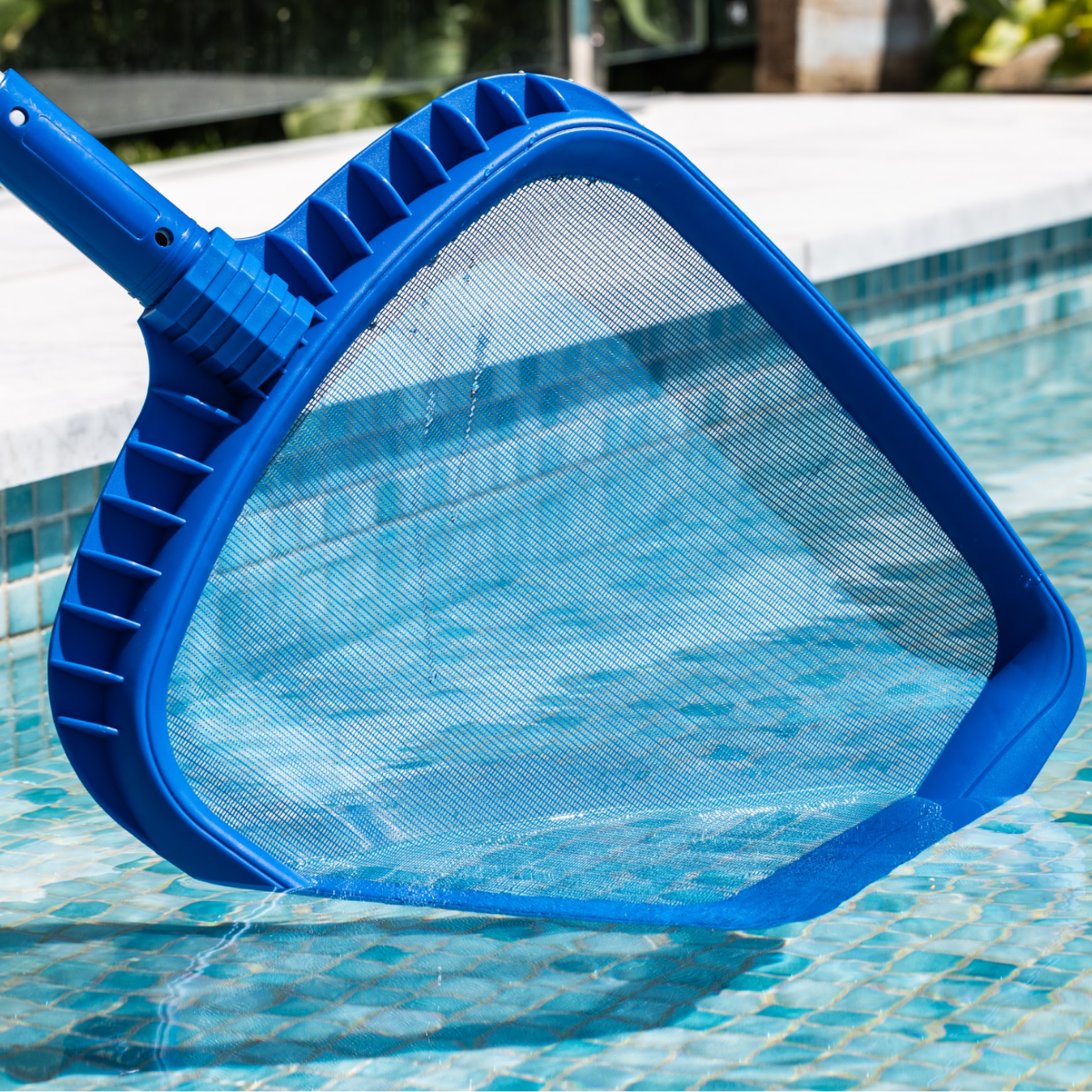
Cleaning
Daily tasks:
- Skim the water surface with a leaf scoop or rake to remove leaves and debris.
- Check the pool’s filter pressure gauge. The ideal reading should typically be between 10 and 15 psi; anything above this indicates it might be time to clean or backwash the filter.
Weekly tasks:
- Brush and vacuum the pool walls and floor.
- If you have a cartridge filter, rinse the cartridge if there’s reduced water flow or visible dirt build-up. If you have a sand filter, backwash it if the pressure gauge shows a reading of 8 to 10 psi above normal.
Filtration
As a general guideline, your pool filter should run for 8 to 12 hours daily to adequately filter and circulate the entire volume of water.
For your filter to do its job, follow these maintenance tips.
Maintaining a Cartridge Filter
- Rinse the cartridge every two to four weeks.
- Soak the cartridge in a cleaning solution every few months.
- Replace the cartridge every two to three years or when you notice fraying, tearing, or decreased performance.
- Replace the filter between five and ten years or when you notice a persistent decrease in water clarity and flow rate, even after cleaning.
Maintaining a Sand Filter
- Backwash the sand filter when the pressure gauge reads 8 to 10 psi above normal.
- Replace the sand every seven to ten years or when you notice decreased efficiency or signs of wear like channeling or mud balls.
- Replace the filter between seven and twenty years or when you notice consistent issues with water clarity or the filter media failing to maintain proper pressure levels after backwashing.
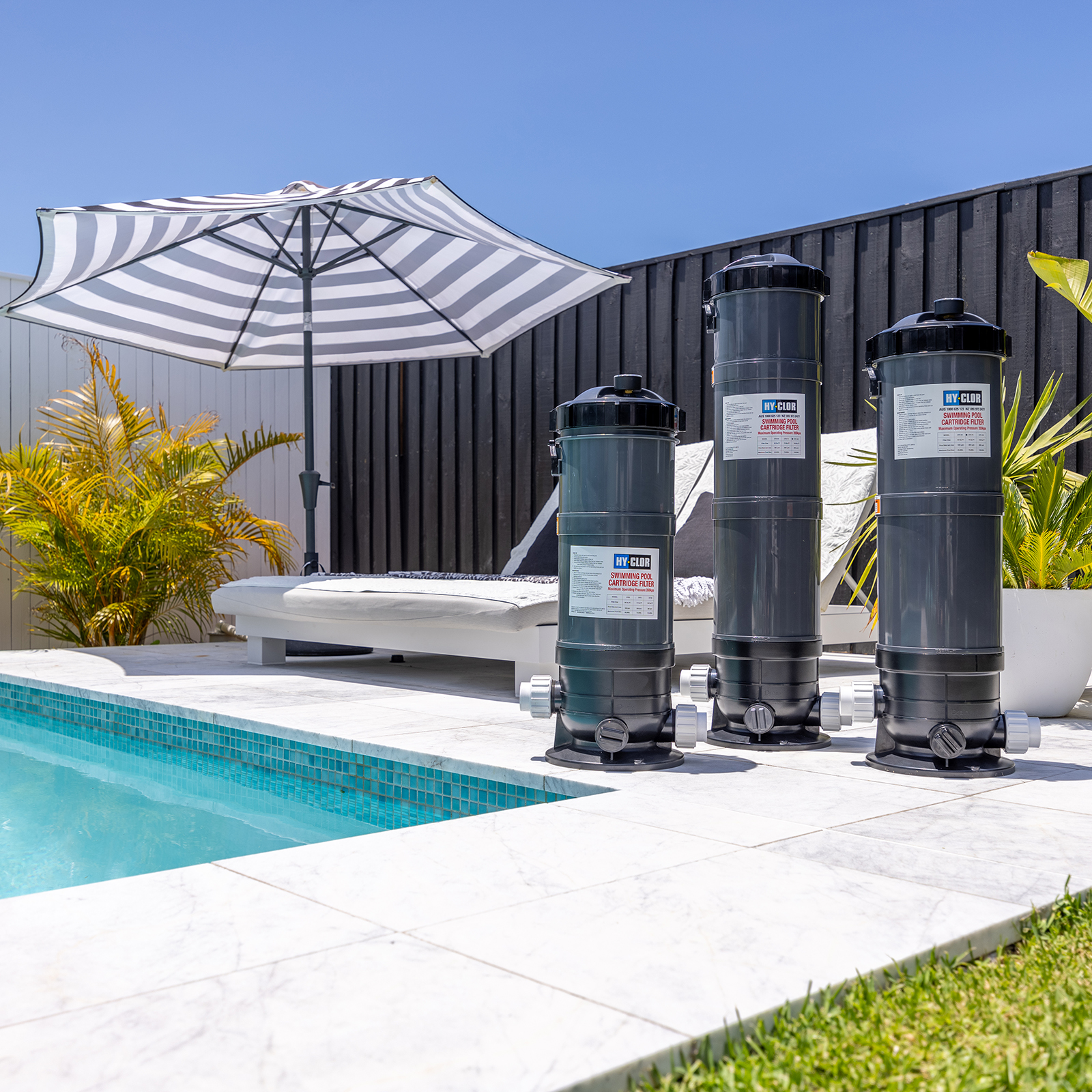
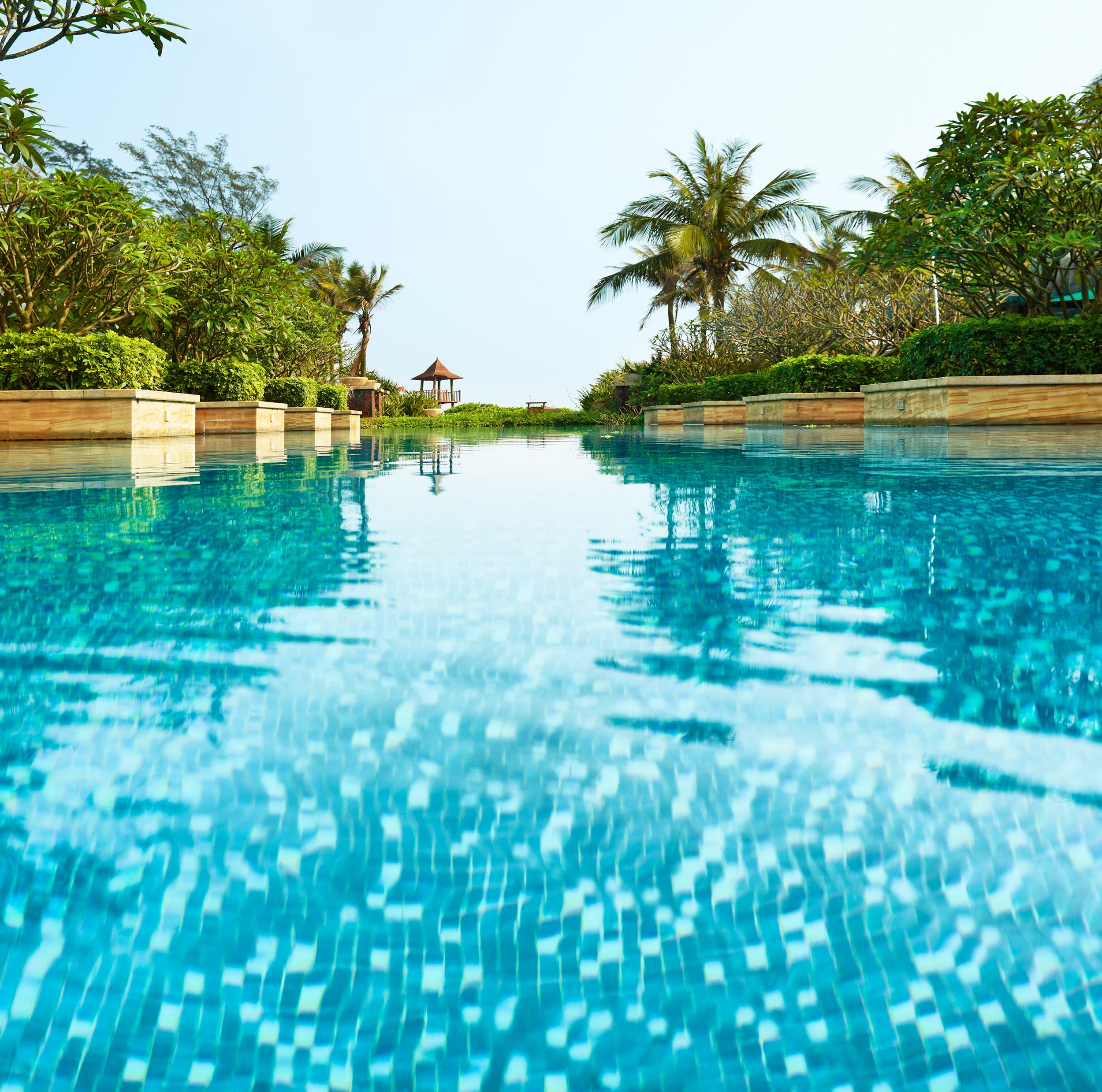
Seasonal Pool Care Tips
Different seasons bring different swimming pool maintenance challenges.
- Summer: Algae and bacteria thrive in warm temperatures, so check your pool’s chemistry twice a week, keep the filter running for 8 to 12 hours a day, and brush and vacuum every few days.
- Autumn: Leaves in your pool can cause algae growth and unbalanced chemical levels, so skim them out daily, use an algaecide regularly, and keep those chemicals balanced.
- Winter: Reduce filtration time to four to six hours per day. Test the water every few weeks to monitor chemical levels, occasionally brush and vacuum, and check that all mechanical equipment is functioning. Cover your pool to stop dirt and leaves from getting in the water and to help maintain chemical balance.
- Spring: Add a shock treatment and let the pool’s filtration system run continuously for 24 hours. Backwash your sand filter or clean the cartridge in your cartridge filter. And, of course, test and adjust water chemistry.
FAQs About Pool Maintenance for Beginners
- Testing: Regularly check and balance the water’s pH, chlorine, alkalinity, and other chemical levels.
- Cleaning: Skim the surface, brush the walls and floor, and vacuum.
- Filter maintenance: Regularly clean or backwash the pool filter.
- Shocking: Occasionally apply a shock treatment to kill bacteria and algae.
- Test and balance the water’s pH, chlorine, alkalinity, and hardness levels.
- Run the pump and filter system to distribute the chemicals evenly.
- Apply a shock treatment to eliminate contaminants and clear the water.
- Add an algaecide to prevent algae growth.
- Allow the water to circulate for a few hours, then retest and adjust chemicals as needed.
- Skim any debris out daily.
- Brush and vacuum weekly.
- Test and adjust chemical levels weekly.
- Perform weekly shock treatments to eliminate contaminants.
- Regularly circulate water through the filter.
- Use a clarifier if the water becomes cloudy.
Jump Into Pool Maintenance With Confidence
Are you wondering, “What pool care products and tools are available for pool maintenance near me?”
Visit your nearest Bunnings Warehouse for our range of high-quality products and tools that simplify DIY pool maintenance for beginners.
For expert swimming pool maintenance advice, contact the Hy-Clor team by filling out this online form. We’re here to help!
